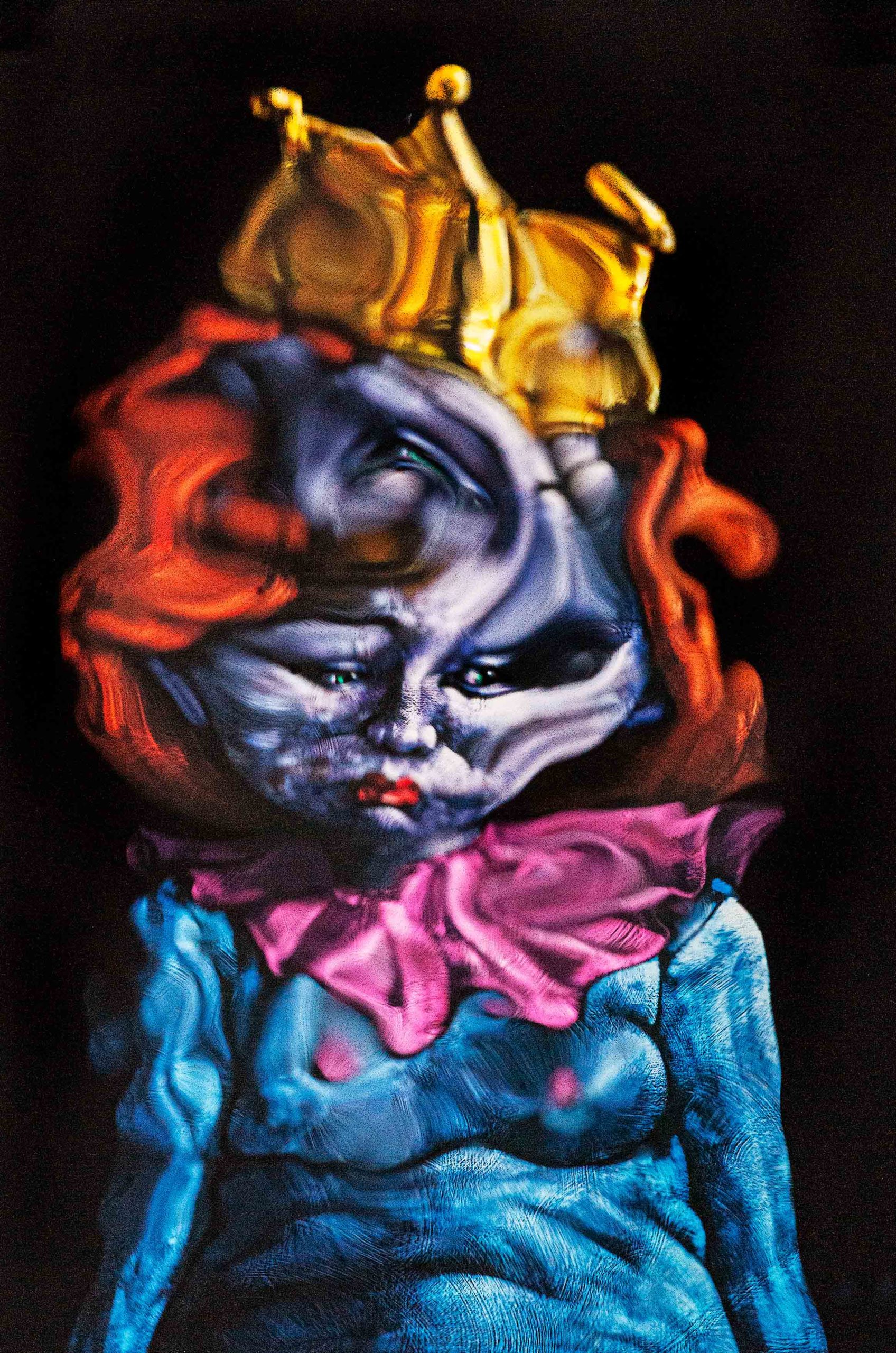PRINCESS
Die Prinzezessin gleitet als geheimnisvolle Gestalt durch das flüssige Dunkel von Black Water. Wo Malerei und Fotografie ineinanderfließen, zeigt sie sich zerfließend, zerbrechlich und wandelbar. Sie tanzt zwischen Licht und Schatten, ein flüchtiges Wesen voller Widersprüche, das sich der Kontrolle entzieht und gerade darin seine Schönheit findet.
Wasser wird hier zum lebendigen Spiegel der Vergänglichkeit – unberechenbar, chaotisch, voller Magie. Es formt und zerrt, verwischt und enthüllt. In einem einzigen, kostbaren Augenblick hält die Hochgeschwindigkeitskamera das Zerfallen und Neuwerden fest – ein Moment der Unvorhersehbarkeit, in dem sich das Bekannte in etwas Fremdes verwandelt. Kein Algorithmus, keine künstliche Intelligenz kann diesen Tanz der Formen nachahmen, denn er lebt vom Zufall, von der Unberechenbarkeit und dem Zauber des Augenblicks.
Die Gemälde bilden den Ursprung, sind die erste Spur einer Geschichte, die sich im Wasser entfaltet. Das Bild zerfließt, zerbricht, verschiebt sich und wird neu zusammengesetzt. Die Prinzessin ist keine statische Figur, sondern ein Wesen im ewigen Wandel, das mit jeder Wellenbewegung neue Facetten seiner Existenz offenbart.
Der Entstehungsprozess ist ein Zusammenspiel von analogen und digitalen Welten. Aus der expressiven, in Acryl gemalten Vorlage lässt Walter Gerstung die Princess im schwarzen Wasserbecken lebendig werden.
Das Wasser ist der entscheidende Akteur: Es formt, verwirbelt und zerreißt, ohne planbare Struktur, ein reines Naturchaos. Die Kamera friert in der tausendstel Sekunde die flüchtige Bewegung ein – ein einmaliger Moment, der sich niemals wiederholen lässt.
Erst danach vollendet der Künstler seine Arbeit mit einer digitalen Nachbearbeitung.Dabei bleibt die Urkraft der Aufnahme erhalten, nichts wird übermalt oder verfälscht.
So entstehen einzigartige Fotounikate – pure Zeugnisse eines Augenblicks, die ihre Eigenständigkeit nicht verlieren, sondern als fragile Momentaufnahme den Betrachter in eine andere Dimension entführen.
Unikateditionen
Die selektierten Motive werden in streng limitierten, numerierten und signierten Auflagen, inkl. Echtheitszertifikaten angeboten.
Herstellungsprozess
Die Werke werden im Labor auf 235 g/qm Fujiflex PET Highend-Fotopapier belichtet. (75 Jahre Hersteller-garantierte Farbbrillanz)
Formate und Auflagen
Masterformat 120 x 160 cm, Auflage 5 Stck
Premiumformat 70 x 100 cm, Auflage 7 Stck
Offene Edition – Kleinformate bis 20×30 cm zum schnellen Abverkauf unsigniert.
Finishing
Der Premium-Fuji-Fotoabzug wird auf AluDibond kaschiert, mit rückseitig umlaufenden Aufhängeprofilen. Auf Wunsch kann das Werk mit einem minimalistischen 6mm breiten und 50mm tiefen Alu-Schatten-
fugenrahmen ausgestattet werden.
Als Einzel-Unikate je Motiv in Auflage 1 Stck sind die Motive bis 200 cm Höhe mit individuellem, z.B. Acrylfinish möglich.

